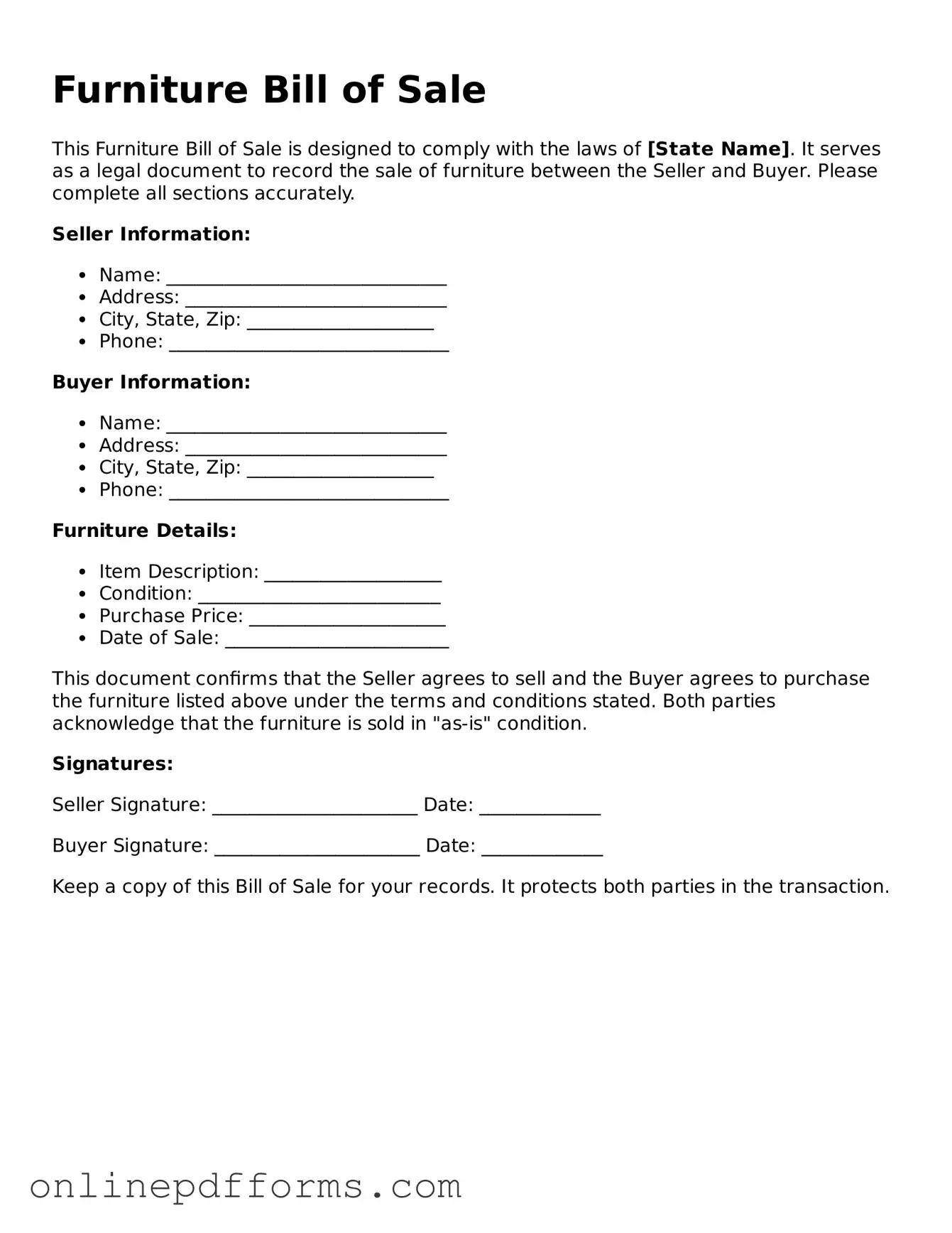The Furniture Bill of Sale form shares similarities with the Vehicle Bill of Sale. Both documents serve as proof of transfer of ownership from one party to another. In the case of a vehicle, this document typically includes details such as the vehicle identification number (VIN), make, model, and year. Like the Furniture Bill of Sale, it outlines the purchase price and the date of the transaction. This ensures that both the buyer and seller have a clear record of the sale, which can be crucial for future reference, especially when registering the vehicle or addressing any disputes that may arise.
Another document akin to the Furniture Bill of Sale is the Real Estate Purchase Agreement. This agreement formalizes the sale of real property, detailing the terms and conditions under which the property will be transferred. While it deals with immovable property, the essence remains the same: it records the agreement between buyer and seller, including the purchase price, closing date, and any contingencies. Both documents serve to protect the interests of both parties by providing a clear outline of the transaction.
The Personal Property Bill of Sale is another document that closely resembles the Furniture Bill of Sale. This form is used for the sale of movable items, such as electronics, jewelry, or collectibles. Like the Furniture Bill of Sale, it includes information about the item being sold, the sale price, and the identities of both the buyer and seller. This document helps establish a clear record of ownership transfer, which can be important for both parties in case of disputes or for insurance purposes.
For those engaging in the buying or selling of a motor vehicle, it is essential to utilize the appropriate documentation to ensure a smooth transaction. The Bill of Sale for Motor Vehicles serves as a formal acknowledgment of the transfer of ownership, protecting the rights of both the seller and buyer while providing a comprehensive record of the sale.
Similarly, the Equipment Bill of Sale serves a purpose akin to that of the Furniture Bill of Sale, but specifically for business equipment and machinery. This document outlines the specifics of the equipment being sold, including its condition, serial number, and any warranties. Just like the Furniture Bill of Sale, it protects both the buyer and seller by documenting the transaction and ensuring that both parties are aware of their rights and obligations.
Lastly, the Boat Bill of Sale is another document that parallels the Furniture Bill of Sale. This form is specifically designed for the sale of boats and watercraft. It includes essential details such as the boat's hull identification number (HIN), make, model, and year, along with the sale price and date. Much like the Furniture Bill of Sale, it acts as a legal record of the transaction, helping to facilitate a smooth transfer of ownership and providing both parties with a clear understanding of the terms of the sale.
